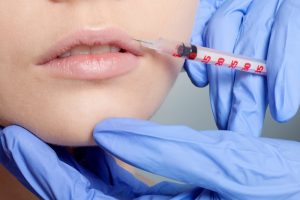We might be in the home run stretch of summer but that doesn’t mean we still can’t enjoy it! There’s still plenty of sunshine going around and the perfect weather makes it so easy to spend more time than usual in the great outdoors. But unfortunately, with the summer sun comes the danger of sunburn.
Sunlight can have a range of effects on your skin. While some sunlight is beneficial (such as providing vitamin D), too much sun can cause damage to your skin. So what can you do this summer to prevent sunburn and damage to your skin? Read on!
Tip #1 – Sunscreen
The most obvious, most effective yet often the most ignored way to combat sunburn is sunscreen. The importance of sunscreen cannot be understated. It acts as a barrier; blocking harmful UV rays from the sun and ultimately protecting your skin from getting sunburnt. There’s sunscreen available for almost all types of skin, so there’s no reason not to put it on!
Sunscreen comes in both physical and chemical forms. Physical sunscreen blocks UV rays and chemical ones absorb them. Picking one is entirely dependent on you and your skin. The most important thing is pick a broad spectrum sunscreen that has a high SPF and to wear whatever actually gets you to wear sunscreen.
Tip #2 – Reapplying sunscreen
We’ve gone over how important sunscreen but unfortunately too many people believe you can slap it on once and be done with it. To provide the most protection sunscreen needs to be reapplied over the course of the day. Sunscreen’s effectiveness fades as time goes on and can be washed away if you’re swimming or excessively sweating.
So how often should you reapply? The Skin Cancer Foundation recommends reapplying sunscreen on exposed skin every two hours and immediately if you’ve been swimming. So remember to slop on sunscreen not just once, but multiple times a day.
Tip #3 – Be wary of when the sun is the hottest
The strength of the sun and it’s rays are different depending on the time of the day. It’s important to know which times of the day have the sun at its strongest. This is usually between 10am and 3pm, with UV levels and radiation reaching its peak around noon.
We’re not saying to completely avoid the sun during these hours (it’s most of the day after all). But knowing when UV radiation is strongest lets you prepare beforehand and avoid being completely exposed to the sun during these times.
Tip #4 – Wear appropriate clothing
While the urge to wear less is tempting, especially in the middle of summer, wearing appropriate clothing can go a long way in protecting you from the sun. Not all clothes are made to provide sun protection. A Unique Protection Factor (UPF) rating is used to measure how much UV radiation penetrates a fabric. Similar to the SPF rating found in sunscreen, clothing made with a high UPF rating are great for sun protection.
Regular clothing also works for sun protection but only in the cases of clothes which are dense or tightly woven. Materials such as denim, synthetic fiber and cotton are effective. Rule of thumb is if your clothes are thin, loosely woven or can be seen through then they might not be able to protect you from the sun very well.
Tip #5 – Sunglasses & Hats
Leading off the previous tip, if you’re planning to be outdoors this summer you should try to wear sunglasses and a hat. UV radiation isn’t limited to the skin, your eyes are also at risk. Sunglasses act as a barrier, protecting you from the sun’s harmful rays.
Hats another form of sun protection. They act to block perhaps the most sensitive skin on your entire body – your face. Wide brim hats are often preferred by experts as they can also protect the back of your neck and shoulders (if wide enough). However, simply wearing a hat that protects your face, such a baseball cap, is effective and better than nothing.
Tip #6 – Sun Protection for everyone
Sun protection is vital and should be practiced by everyone – including young children and babies. Before you head out to the beach or local park with your family, make sure your children have adequate protection from the sun.
Remember to apply sunscreen regularly, dress them appropriately and monitor how much time they spend in the sun.
Tip #7 – Check any irregularities
Having bright red, peeling skin or painful blisters are common signs of sunburn and sun damage. However, sun damage can come in more subtle forms such as moles or small dark patches. Make sure that these irregularities aren’t signs of skin cancer by immediately heading to your local GP or doctor to examine them.
While they may end up being benign it’s absolutely better to be safe than sorry. So if you do end up spotting anything that wasn’t there before get it checked out immediately!
Enjoy a sunburn free summer!
Summer shouldn’t be spent dealing with the painful consequences of sunburn. Make sure you’re not spending hours peeling off skin by putting our sun protection tips into practice every time you go out! Be sure to consistently apply sunscreen, wear appropriate clothing and make sure your entire family stays sun safe this summer.
Want more articles such as this one? Check out our blog at Northern Beaches Cosmetics to find more articles that help you get the best out of your skin!

